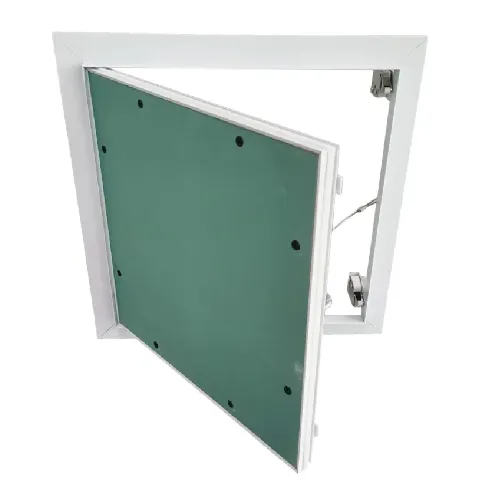Dec . 11, 2024 18:46 Back to list
ceiling access doors and panels
Ceiling Access Doors and Panels Essential Features for Modern Construction
In the realm of modern construction and architectural design, the importance of ceiling access doors and panels cannot be overstated. These functional components play a crucial role in facilitating maintenance, enhancing accessibility, and ensuring the overall efficiency of building operations. In this article, we will explore the significance of ceiling access doors and panels, their various types, and their applications across different settings.
Understanding Ceiling Access Doors and Panels
Ceiling access doors are specially designed openings that allow for easy access to concealed areas above the ceiling. These areas often house vital infrastructure, such as electrical wiring, plumbing, and HVAC systems. By installing access panels, building owners and maintenance personnel can efficiently conduct repairs, inspections, and upgrades without the need for extensive demolition or disruption to the operational aspects of the building.
There are various types of ceiling access doors and panels, each tailored to meet specific needs. Common materials include steel, aluminum, and fiberglass, with finishes that can be painted to match the surrounding surfaces. The choice of material usually depends on the application, load requirements, and the environmental conditions of the installation site.
Types of Ceiling Access Doors
1. Standard Access Panels These are the most common types of ceiling access doors, designed to provide straightforward access to the ceiling area. They are available in various sizes and can be installed in drywall, plaster, or ceiling tile.
2. Fire-Rated Access Panels In buildings where fire safety is a priority, fire-rated access panels are necessary. These doors are constructed to withstand high temperatures and prevent the spread of fire, ensuring the safety of the occupants and the integrity of the building.
ceiling access doors and panels

3. Security Access Panels In environments that require heightened security, such as data centers and government buildings, security access panels come equipped with locks or tamper-resistant designs. They provide access control and protect sensitive infrastructure from unauthorized entry.
4. Insulated Access Panels For buildings that require temperature control, insulated access panels help to maintain energy efficiency. These panels are filled with insulation material to minimize heat transfer, making them suitable for use in commercial buildings and cold storage facilities.
Applications Across Various Settings
Ceiling access doors and panels are utilized in a variety of environments, including residential, commercial, and industrial settings. In residential construction, access panels can provide homeowners with easy access to plumbing or electrical systems, thus reducing maintenance hassles. In commercial buildings, these panels are integral for quick access to service maintenance areas, ensuring minimal downtime during repairs.
Additionally, in industrial settings, ceiling access panels are essential for facilitating routine maintenance of equipment and systems that may be positioned above the ceiling. This capability is particularly vital in factories, warehouses, and production facilities, where operational efficiency is paramount.
Conclusion
In summary, ceiling access doors and panels are indispensable elements of modern construction. Their ability to enhance maintenance access, improve safety, and support efficient building operations makes them a critical consideration for architects, builders, and facility managers. As buildings evolve and the demands of maintenance grow, the role of ceiling access panels will continue to expand, solidifying their place as a key component in the architectural landscape. Whether it's for residential homes, commercial enterprises, or industrial complexes, investing in quality ceiling access solutions is essential for ensuring functionality, safety, and longevity in building design.
-
Quality Ceiling Trap Doors & Access Panels | Easy & Secure AccessNewsAug.30,2025
-
Durable Ceiling T Grid Systems | Easy InstallationNewsAug.29,2025
-
PVC Gypsum Ceiling: Durable, Laminated Tiles for Modern SpacesNewsAug.28,2025
-
Pvc Gypsum Ceiling Is DurableNewsAug.21,2025
-
Mineral Fiber Board Is DurableNewsAug.21,2025
-
Ceiling Tile Clip Reusable DesignNewsAug.21,2025







